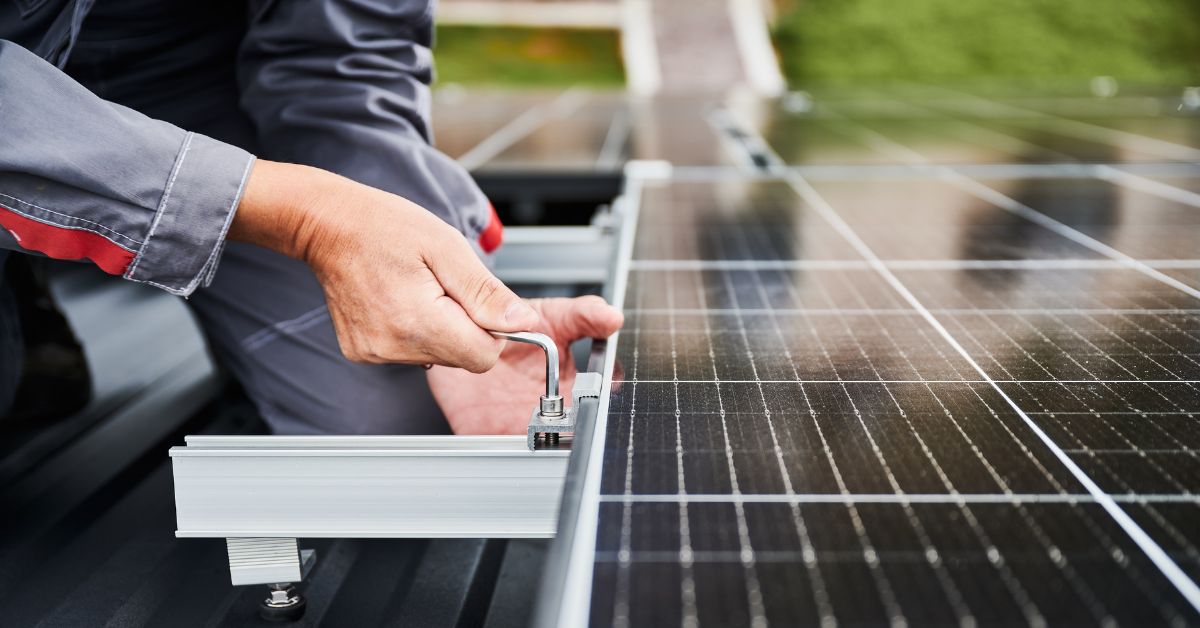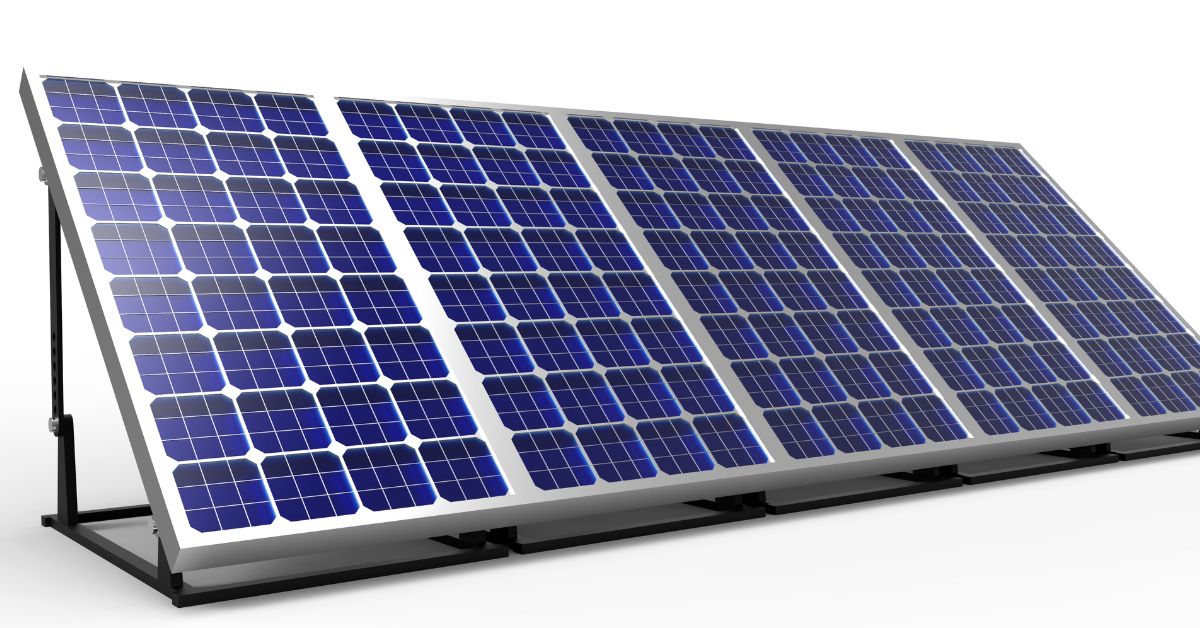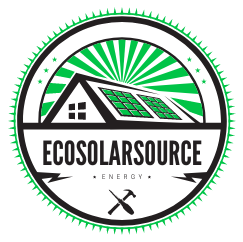Types of Commercial Solar Panels
There are three main types of commercial solar panels, each suited to different needs: Monocrystalline, Polycrystalline, and thin film. Monocrystalline panels are the most efficient, featuring high-grade silicon for maximum energy output, making them ideal for businesses with limited roof space.
Polycrystalline panels, while slightly less efficient, offer a more affordable option and are suitable for large installations. Thin-film panels, the least efficient, are lightweight and flexible, making them perfect for unconventional surfaces or portable applications. The choice depends on budget, available space, and energy requirements, ensuring solar solutions are tailored to business needs.
Table of Contents
Types of Commercial Solar Panels: A Comprehensive Guide
As the global demand for clean energy surges, solar power has emerged as a leading renewable energy solution, especially for commercial and industrial applications. Solar energy is not only environmentally friendly, but it also offers businesses significant financial benefits, from reducing energy bills to qualifying for tax incentives and subsidies. A key component in leveraging solar energy for commercial use is selecting the right type of solar panel for the specific needs of a business. With various options available, understanding the different types of commercial solar panels can make a crucial difference in efficiency, longevity, and overall energy yield.
Monocrystalline Solar Panels
Monocrystalline solar panels, also known as single-crystal panels, are one of the most commonly used and efficient types of solar panels for commercial applications. They are made from pure silicon and have a uniform black appearance. The process of manufacturing these panels involves cutting silicon ingots into wafers, which results in higher efficiency rates due to the unbroken structure of the crystal.

Advantages:
- High Efficiency: Monocrystalline solar panels typically have higher efficiency rates than other types, often ranging from 17% to 22%. This makes them ideal for businesses with limited roof or land space where maximizing energy output is crucial.
- Longevity: These panels tend to have a long lifespan, often exceeding 25 years with minimal performance degradation.
- Better Performance in Low Light: Monocrystalline panels perform better than other types in low-light conditions, such as a on cloudy days or during early mornings and the late afternoons.
Disadvantages:
- Cost: The advanced manufacturing process of monocrystalline panels results in higher costs compared to other types. Businesses may need to consider the upfront investment against long-term savings.
- Waste: The production process results in significant silicon waste, making it less environmentally friendly than other panel types.
Ideal for: Businesses that prioritize efficiency and have space constraints, such as urban office buildings or industrial facilities with limited roof space.
Polycrystalline Solar Panels
Polycrystalline solar panels are the made from multiple silicon crystals melted together. Unlike monocrystalline panels, which are made from a single crystal structure, polycrystalline panels have a speckled blue appearance and are easier to produce, resulting in lower costs.
Advantages:
- Cost-Effective: Polycrystalline panels are cheaper to produce than monocrystalline panels, making them a popular choice for businesses looking to install solar at a lower upfront cost.
- Sufficient Efficiency: While not as efficient as monocrystalline panels, polycrystalline solar panels still offer reasonable efficiency rates, typically ranging from 15% to 17%.
- Less Waste: The manufacturing process produces less silicon waste compared to monocrystalline panels.
Disadvantages:
- Lower Efficiency: These panels are less efficient than monocrystalline, meaning more panels may be needed to produce the same amount of energy. This can be a challenging for businesses with limited space.
- Less Aesthetic Appeal: Polycrystalline panels have a bluish hue that some may find less visually appealing, especially for businesses concerned with building aesthetics.
Ideal for: Businesses with ample roof or land space that are looking for a cost-effective solution, such as warehouses, manufacturing plants, or retail facilities.
Thin-Film Solar Panels
Thin-film solar panels are a newer type of solar technology that uses photovoltaic materials like cadmium telluride (CdTe) or amorphous silicon, which are deposited onto a substrate. These panels are flexible, lightweight, and can be manufactured in large sheets, which differentiates them from traditional rigid panels.
Advantages:
- Flexibility: Thin-film panels can be installed on surfaces that may not support the weight of traditional panels, such as lightweight commercial roofs or facades.
- Lower Temperature Coefficients: These panels perform better in high temperatures, making them suitable for hot climates where other panels may lose efficiency.
- Versatility: Thin-film panels are flexible, making them suitable for a range of applications, including curved surfaces and building integration.
Disadvantages:
- Lower Efficiency: Thin-film solar panels generally have lower efficiency rates (between 10% to 12%) compared to crystalline silicon panels. This means they require significantly more space to generate the same amount of power.
- Shorter Lifespan: Thin-film panels typically have shorter lifespans than monocrystalline or polycrystalline panels, which may result in higher replacement costs over time.
Ideal for: Large commercial projects where space is not a constraint or for businesses in hotter climates where other panels may degrade in performance.
Bifacial Solar Panels
Bifacial solar panels are unique in that they can capture sunlight from both the front and the back of the panel. This allows them to generate more electricity from reflected light off surfaces such as the ground, water, or rooftops. These panels are often made from monocrystalline cells, providing high efficiency.
Advantages:
- Higher Energy Output: By capturing light from both sides, bifacial panels can increase overall energy production by 5% to 30%, depending on the installation environment.
- Durability: Many bifacial panels come with a double-glass design, which enhances their durability and extends their lifespan.
- Flexible Mounting: These panels can be mounted on the ground or rooftops with reflective surfaces to maximize energy capture.
Disadvantages:
- Higher Initial Cost: Bifacial solar panels tend to be more expensive than traditional monofacial panels.
- Installation Complexity: To fully benefit from the additional rear-side generation, installation needs to account for reflective surfaces, which can complicate the setup.
Ideal for: Businesses with reflective surfaces such as parking lots or large open areas, and those that want to maximize energy production without adding more panels.
Concentrated PV (CPV) Systems
Concentrated Photovoltaics (CPV) uses lenses or mirrors to focus sunlight onto a small area of high-efficiency solar cells. By concentrating the sunlight, CPV systems can generate more power from a smaller surface area.

Advantages:
- High Efficiency: CPV systems can achieve higher efficiencies than traditional photovoltaic panels, often exceeding 40%.
- Space Savings: These systems can generate significant power with less space, making them ideal for commercial settings where land or roof space is limited.
Disadvantages:
- Complexity: CPV systems require precise tracking mechanisms to ensure they follow the sun throughout the day, adding complexity and cost to the installation.
- High Costs: CPV systems are generally more expensive than traditional solar panels, and the technology is still maturing, which can limit widespread commercial use.
Ideal for: High-energy businesses in sunny areas with limited space, such as solar farms or large commercial operations in desert climates.
PERC (Passivated Emitter and Rear Cell) Solar Panels
PERC solar panels are an evolution of standard monocrystalline panels, offering an additional layer of passivation on the rear side of the solar cells. This technology helps to increase energy efficiency by reflecting unused sunlight into the cell for further conversion.
Advantages:
- Improved Efficiency: PERC panels are about 5% more efficient than traditional monocrystalline panels, offering an energy boost without requiring more space.
- Low-Light Performance: These panels perform better in low-light conditions, making them ideal for areas with frequent cloud cover or shorter daylight hours.
- Compatibility: PERC technology is compatible with existing monocrystalline and polycrystalline cells, making it versatile for various installations.
Disadvantages:
- Slightly Higher Cost: The additional manufacturing step for PERC technology results in slightly higher upfront costs compared to traditional panels.
- Degradation Over Time: Like most silicon-based technologies, PERC panels can degrade in performance over time.
Ideal for: Businesses seeking high-efficiency solutions, particularly in areas where daylight is limited, such as northern latitudes or urban centers.
Hybrid Solar Panels
Hybrid solar panels, also known as solar-thermal hybrids, combine both photovoltaic and solar thermal technologies into a single panel. These systems generate electricity while simultaneously using sunlight to produce hot water or heat air.
Advantages:
- Dual Purpose: Hybrid panels offer both electricity and thermal energy, making them ideal for businesses that require both power and heating.
- Increased Efficiency: By using both forms of solar energy, hybrid panels can increase the total energy yield from the sun.
Disadvantages:
- Higher Cost: The technology is more complex, which results in higher upfront costs compared to standard PV panels.
- Limited Commercial Use: While promising, hybrid panels are still a niche technology and may not be widely available for all commercial applications.
Ideal for: Businesses with both electricity and heating needs, such as hotels, hospitals, and manufacturing facilities.
Building-Integrated Photovoltaics (BIPV)
Building-integrated photovoltaics (BIPV) are solar panels that are integrated directly into building materials such as windows, walls, or roofs. These panels serve a dual purpose: generating electricity while functioning as part of the building’s structure.
Advantages:
- Aesthetic Appeal: BIPV systems blend seamlessly into a building’s design, making them ideal for businesses concerned about aesthetics.
- Space Efficiency: By integrating into the building materials, BIPV systems save space and offer a dual function for both energy generation and structural support.
- Customization: BIPV can be customized to fit various building designs and needs, providing installation flexibility.
Disadvantages:
- Cost: BIPV systems are more expensive to install due to the integration into building materials and the need for specialized labor.
- Lower Efficiency: Because BIPV systems are often installed at less-than-optimal angles for solar capture, they may be less efficient than traditional panels.
Ideal for: High-end commercial properties or businesses prioritizing design aesthetics, such as corporate headquarters or real estate developments.
Emerging Solar Technologies
While traditional solar panel types dominate the commercial market, several emerging technologies could revolutionize solar energy in the coming years. Some of these include:
- Perovskite Solar Cells: Offering the potential for lower manufacturing costs and higher efficiency, perovskite solar cells are a promising next-generation solar technology.
- Organic Solar Cells: Made from organic polymers, these solar cells are lightweight and flexible, ideal for portable and wearable solar applications.
- Quantum Dot Solar Cells: This cutting-edge technology uses tiny semiconductor particles to capture light more efficiently, potentially leading to significant efficiency gains.
While these technologies are still in the research and development stage, they represent exciting possibilities for the future of commercial solar power.
How to Choose the Right Solar Panel for Your Business

Selecting the right solar panel for your business involves several key factors:
- Energy Needs: Calculate your business’s energy consumption and determine how much energy you want to offset with solar power.
- Available Space: Consider the amount of roof or land space available for installation. Higher-efficiency panels may be required if space is limited.
- Budget: Factor in the initial costs of different solar panel types versus long-term savings and incentives. High-efficiency panels often cost more upfront but may provide greater savings over time.
- Climate: Your location’s climate can influence the best panel choice. Thin-film panels, for example, may perform better in high temperatures, while PERC or monocrystalline panels are better for cloudy areas.
- Aesthetic Preferences: For some businesses, especially those in customer-facing industries, the appearance of the solar panels may matter. In such cases, BIPV or black monocrystalline panels may be preferable.
FAQs About Types of Commercial Solar Panels
Q1. What are the main types of commercial solar panels?
The three most common types of commercial solar panels are monocrystalline, polycrystalline, and thin-film panels. Each has unique characteristics, such as efficiency, cost, and aesthetics.
Q2. What is the difference between monocrystalline and polycrystalline solar panels?
Monocrystalline panels are made from a single crystal structure, offering higher efficiency and a sleeker appearance. Polycrystalline panels are made from multiple silicon crystals, which are typically less efficient but more affordable.
Q3. What are thin-film solar panels, and where are they used?
Thin-film solar panels are made by layering photovoltaic material onto a surface like glass or metal. They are less efficient than crystalline panels but are lightweight, flexible, and suitable for large-scale installations where space isn’t a constraint.
Q4. Which type of solar panel is the most efficient?
Monocrystalline solar panels generally have the highest efficiency, with ratings often exceeding 20%, making them ideal for commercial buildings with limited roof space.
Q5. What is bifacial solar technology, and how does it differ from standard panels?
Bifacial solar panels can absorb light on both sides, increasing energy generation. These panels are becoming popular in commercial installations due to their higher energy output in reflective environments.
Q6. What are PERC (Passivated Emitter Rear Contact) solar panels?
PERC solar panels include an additional layer that reflects unused light back into the cell, improving efficiency. They are particularly useful in high-temperature environments, common in commercial applications.
Q7. Are there solar panels that can be integrated into building materials?
Yes, Building-Integrated Photovoltaics (BIPV), such as solar shingles and facades, can be directly integrated into building surfaces. They are aesthetically pleasing but usually less efficient and more expensive than traditional solar panels.
Q8. Which type of solar panel is best for large-scale commercial installations?
For large-scale installations with abundant space, polycrystalline or thin-film panels may be more cost-effective. Monocrystalline panels, while more efficient, might be more suited to areas with limited roof space or high energy demands.
Q9. How does shading affect different types of solar panels?
Shading impacts all solar panels, but thin-film panels tend to perform slightly better under partial shading than crystalline panels. Additionally, modern technologies like microinverters can minimize shading losses.
Q10. How do I choose the best type of solar panel for my commercial building?
Factors like budget, roof space, energy needs, and climate play a key role. Monocrystalline panels are ideal for high-efficiency needs, polycrystalline for cost savings, and thin-film for large, low-weight installations. Consulting with a solar expert is advisable for tailored recommendations.
Understanding the different types of commercial solar panels is crucial for businesses looking to adopt solar energy solutions. Whether your priority is cost, efficiency, or aesthetics, the solar panel industry offers a wide range of options to meet various needs. Monocrystalline panels are perfect for high-efficiency installations with limited space, while thin-film panels offer flexibility and versatility.
Innovations such as bifacial panels and hybrid systems provide even more opportunities for businesses to harness solar power effectively. By carefully considering factors such as energy consumption, available space, budget, and climate, companies can select the best solar technology to achieve both environmental and financial benefits.
Click here to learn more about Types of Commercial Solar Panels

